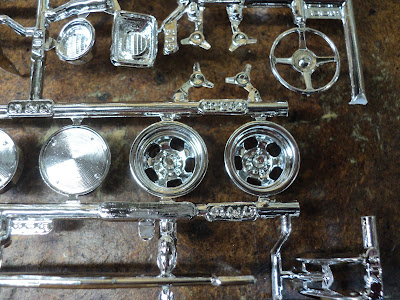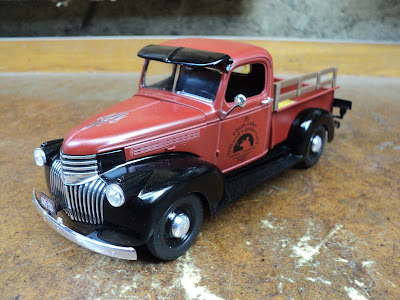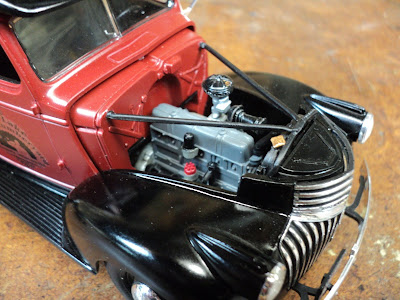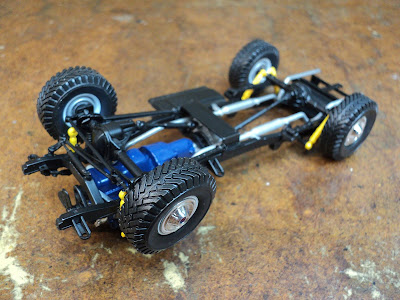[NOTICE -- THURSDAY, OCTOBER 10, 2019:
I got as far with this kit as the exhaust pipes installation, at which point I decided to pack it in. The kit is not buildable.
My advice is to avoid AMT kits, across the board. They are utter trash, and into the trash is where this one ended up.]
- - -
I normally avoid AMT kits because I've found their quality to be dreadful. However, for the sake of this subject, I decided to take my chances and see what I can make of an AMT kit.
A gold sticker on the face of the box says, "SPECIAL 50th ANNIVERSARY EDITION. INCLUDES EXCLUSIVE HISTORICAL PHOTO BOOKLET"
The kit offers three build variants -- stock, custom and racing. While I'm inclined to always do stock builds, I'm tempted to do the racing variant for the sake of the decal set. I find that decals can really add life to a model, and the Avanti might really benefit from a decal set. We'll see.
The kit also features opening doors and steerable wheels. Those are challenging things to achieve in 1/25 scale. We'll see how they turn out.
Anyway, it's on with getting organized, and getting components nipped out, trimmed and trial fitted. I'll report any anomalies or special difficulties that I encounter.
- - -
Unclear Engine Instructions
I may just not know enough about supercharged V-8 engine configurations, but I find the instructions for the optional engine build to be unclear. I can't make out how the engine is actually aspirated. I think I'll stick with the stock build.
- - -
A Wheels Warning
The wheel rims are closely attached to their sprue trees.
That makes nipping out the rims a bit dangerous, and I messed up a little when I applied my usual nipping method.
I distorted the edge of a rim with my side-cutting nipper.
I should have cut up the sprue tree at points well away from the wheel rim attachment points first; then sawn the wheel rims free with a razor saw; then trimmed off the remaining sprue with a knife. Next time I'll know better.
- - -
'Broke The Antenna -- MONDAY, NOVEMBER 26, 2018
And having just learned my lesson about freeing components from close, heavy sprue attachments, it seems that I still haven't learned. I broke the antenna when I nipped its lower sprue tree attachment. Again, beware of close, heavy sprue attachments and proceed with all due caution.
Poor Alignment Of Engine Block Halves
The engine block halves align poorly from front to rear. I cut off the two alignment pins, applied CA adhesive and lined up the halves by eye and by feel. I got a much better outcome than I would have by retaining the alignment pins.
- - -
The Engine So Far -- SATURDAY, APRIL 20, 2019
There's quite a ways to go yet.
- - -
The instruction sheet would have one paint the rear shock absorbers orange all over; I don't think that's quite right. I opted to paint the shocks' cylindrical bodies orange, and the rods silver, like so.
- - -
The Engine Nearly Completed And Installed In The Chassis -- THURSDAY, OCTOBER 3, 2019
I don't know where AMT got the idea for a chrome-plated distributor cap -- surely no such thing exists in the real world. What an invitation to spark leakage a chrome-plated distributor cap would be. I should have painted it flat black or orange or something.
- - -
Rear Axle/Leaf Springs With Shocks And Drive Shaft -- MONDAY, OCTOBER 7, 2019
That installation is a bit tricky -- all four components must go together simultaneously, and then be glued in place.
- - -
Exhaust Pipes/Mufflers
They don't fit. Another little surprise from AMT.
I could conceivably try heating and reforming the engine ends of the pipes. I'd likely end up with a warped, distorted mess. I may pack up this wretched kit and retire it.
# # #
# # #

































































